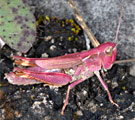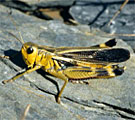Poecilimon cretensis Werner, 1903
![Poecilimon cretensis: Male (Crete, early May 2013) [N] Poecilimon cretensis: Male (Crete, early May 2013) [N]](thumbs/tettigoniidae/cretensis_im2013.jpg)
![Poecilimon cretensis: Male (Crete, early May 2013) [N] Poecilimon cretensis: Male (Crete, early May 2013) [N]](thumbs/tettigoniidae/cretensis_2im2013.jpg)
![Poecilimon cretensis: Male (Crete, early May 2013) [N] Poecilimon cretensis: Male (Crete, early May 2013) [N]](thumbs/tettigoniidae/cretensis_3im2013.jpg)
![Poecilimon cretensis: Male (Crete, early May 2013) [N] Poecilimon cretensis: Male (Crete, early May 2013) [N]](thumbs/tettigoniidae/cretensis_4im2013.jpg)
![Poecilimon cretensis: Male (Crete, early May 2013) [N] Poecilimon cretensis: Male (Crete, early May 2013) [N]](thumbs/tettigoniidae/cretensis_5im2013.jpg)
![Poecilimon cretensis: Male (Crete, early May 2013) [N] Poecilimon cretensis: Male (Crete, early May 2013) [N]](thumbs/tettigoniidae/cretensis_6im2013.jpg)
![Poecilimon cretensis: Male (Crete, early May 2013) [N] Poecilimon cretensis: Male (Crete, early May 2013) [N]](thumbs/tettigoniidae/cretensis_7im2013.jpg)
![Poecilimon cretensis: Male (Crete, early May 2013) [N] Poecilimon cretensis: Male (Crete, early May 2013) [N]](thumbs/tettigoniidae/cretensis_8im2013.jpg)
![Poecilimon cretensis: Male (Crete, early May 2013) [N] Poecilimon cretensis: Male (Crete, early May 2013) [N]](thumbs/tettigoniidae/cretensis_9im2013.jpg)
![Poecilimon cretensis: Male, light form (Crete, early May 2013) [N] Poecilimon cretensis: Male, light form (Crete, early May 2013) [N]](thumbs/tettigoniidae/cretensis_18im2013.jpg)
![Poecilimon cretensis: Female (Crete, early May 2013) [N] Poecilimon cretensis: Female (Crete, early May 2013) [N]](thumbs/tettigoniidae/cretensis_10im2013.jpg)
![Poecilimon cretensis: Female (Crete, early May 2013) [N] Poecilimon cretensis: Female (Crete, early May 2013) [N]](thumbs/tettigoniidae/cretensis_11im2013.jpg)
![Poecilimon cretensis: Female (Crete, early May 2013) [N] Poecilimon cretensis: Female (Crete, early May 2013) [N]](thumbs/tettigoniidae/cretensis_12im2013.jpg)
![Poecilimon cretensis: Female (Crete, early May 2013) [N] Poecilimon cretensis: Female (Crete, early May 2013) [N]](thumbs/tettigoniidae/cretensis_13im2013.jpg)
![Poecilimon cretensis: Female (Crete, early May 2013) [N] Poecilimon cretensis: Female (Crete, early May 2013) [N]](thumbs/tettigoniidae/cretensis_14im2013.jpg)
![Poecilimon cretensis: Female, light form (Crete, early May 2013) [N] Poecilimon cretensis: Female, light form (Crete, early May 2013) [N]](thumbs/tettigoniidae/cretensis_15im2013.jpg)
![Poecilimon cretensis: Female (Crete, early May 2013) [N] Poecilimon cretensis: Female (Crete, early May 2013) [N]](thumbs/tettigoniidae/cretensis_16im2013.jpg)
![Poecilimon cretensis: Mating (Crete, early May 2013) [N] Poecilimon cretensis: Mating (Crete, early May 2013) [N]](thumbs/tettigoniidae/cretensis_17im2013.jpg)
![Poecilimon cretensis: Partly high abundances (Crete, early May 2013) [N] Poecilimon cretensis: Partly high abundances (Crete, early May 2013) [N]](thumbs/tettigoniidae/cretensis_19im2013.jpg)
![Poecilimon cretensis: Habitat on the northern coast east of Rethymnon (May 2013) [N] Poecilimon cretensis: Habitat on the northern coast east of Rethymnon (May 2013) [N]](thumbs/tettigoniidae/cretensis_12h2013.jpg)
![Poecilimon cretensis: Habitat in the central south of Crete [N] Poecilimon cretensis: Habitat in the central south of Crete [N]](thumbs/tettigoniidae/cretensis_2h2013.jpg)
![Poecilimon cretensis: Habitat in the central south of Crete [N] Poecilimon cretensis: Habitat in the central south of Crete [N]](thumbs/tettigoniidae/cretensis_3h2013.jpg)
Nutrition:
Herbal diet. I observed feeding individuals on leaves of thistles, Verbascum and also flowers.
Habitat:
Poecilimon cretensis inhabits areas with at least single higher growing herbs or bushes from the sea up to 1700m asl. It is most common often in thistle stands.
Life cycle:
The adults appear already in April and live until the summer drought. From August it is unlikely to encounter any individuals. The animals often sit in higher numbers on the thistle leaves etc. and perforate them.
Endangerment factors:
Poecilimon cretensis is still widespread and sometimes common in Crete. Nevertheless ist has already suffered great habitat loss especially in coastal areas due to hotel sprawl and urbanization especially in the north.
Remarks:
Poecilimon cretensis is endemic to Crete (Greece).
Poecilimon affinis | Poecilimon amissus | Poecilimon ampliatus | Poecilimon artedentatus | Poecilimon brunneri | Poecilimon chopardi | Poecilimon ebneri | Poecilimon ege | Poecilimon elegans | Poecilimon erimanthos | Poecilimon fussii | Poecilimon gerlindae | Poecilimon gracilis | Poecilimon hamatus | Poecilimon hoelzeli | Poecilimon intermedius | Poecilimon jonicus | Poecilimon laevissimus | Poecilimon macedonicus | Poecilimon mariannae | Poecilimon miramae | Poecilimon mytilenensis | Poecilimon nobilis | Poecilimon obesus | Poecilimon orbelicus | Poecilimon ornatus | Poecilimon pergamicus | Poecilimon propinquus | Poecilimon sanctipauli | Poecilimon schmidtii | Poecilimon superbus | Poecilimon sureyanus | Poecilimon thessalicus | Poecilimon thoracicus | Poecilimon turcicus | Poecilimon veluchianus | Poecilimon werneri | Poecilimon zimmeri | Poecilimon zwicki


